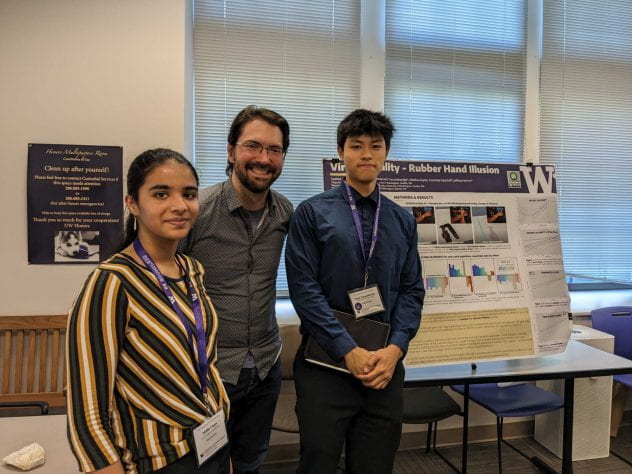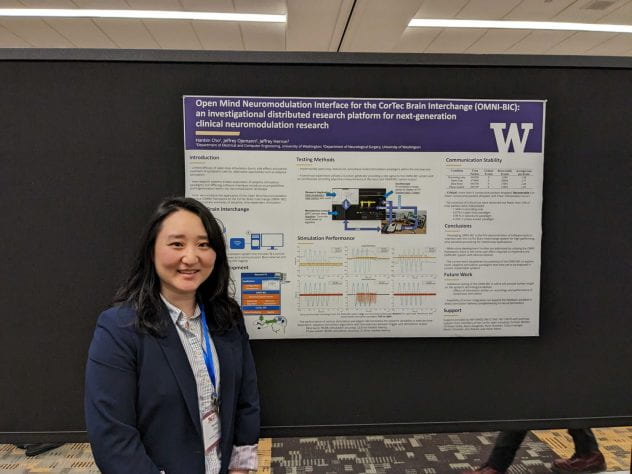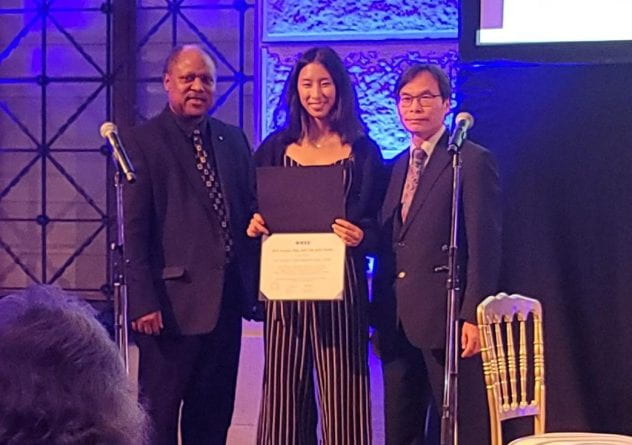059.04 – Kinematic Closed Loop Deep Brain Stimulation for Freezing of Gait in Parkinson’s Disease
G. C. L. ORTHLIEB1, Y. KEHNEMOUYI1, H. DORRIS1, J. O’DAY1, K. B. WILKINS1, S. ADITHAM1, M. N. PETRUCCI1, E. LAMBERT1, J. MELBOURNE1, C. DIEP1, S. HOFFMAN1, J. PARKER1, J. A. HERRON2, *H. BRONTE-STEWART1;
1Stanford Univ., Palo Alto, CA; 2Univ. of Washington, Univ. of Washington, Seattle, WA |
Nov. 12, 2022, 1:00 PM – 5:00 PM
059.05 – Calibration of closed loop deep brain stimulation in Parkinson’s disease
J. A. MELBOURNE1, *K. B. WILKINS1, E. F. LAMBERT1, M. N. PETRUCCI1, Y. M. KEHNEMOUYI1, G. C. L. ORTHLIEB1, H. DORRIS1, C. DIEP1, S. ADITHAM1, J. A. HERRON2, H. M. BRONTE-STEWART1;
1Stanford Univ., Stanford Univ., Palo Alto, CA; 2Univ. of Washington, Univ. of Washington, Seattle, WA |
Nov. 12, 2022, 1:00 PM – 5:00 PM
059.06 – Closed Loop Deep Brain Stimulation Using Beta Bursts for Freezing of Gait in Parkinson’s Disease
*S. ADITHAM1, M. N. PETRUCCI1, K. B. WILKINS1, E. LAMBERT1, J. MELBOURNE1, S. L. HOFFMAN1, Y. M. KEHNEMOUYI1, G. C. L. ORTHLIEB1, J. E. PARKER1, H. DORRIS1, C. DIEP1, R. W. ANDERSON1, J. A. HERRON2, H. M. BRONTE-STEWART1;
1Stanford Univ., Stanford, CA; 2Univ. of Washington, Univ. of Washington, Seattle, WA |
Nov. 14, 2022, 1:00 PM – 5:00 PM
389.01 – Rapid offline identification of neural triggers for a virtual reality brain computer interface (VR-BCI) with intracranial electrodes in humans
*C. PASCHALL1, E. TANUMIHARDJA2, K. E. WEAVER3, B. L. GRANNAN4, A. KO5, J. S. HAUPTMAN4, J. G. OJEMANN4, R. P. RAO2, J. A. HERRON4;
1Bioengineering Dept., 2Paul G. Allen Sch. for Computer Sci. and Engin., 3Radiology, 4Dept. of Neurolog. Surgery, 5Univ. of Washington, Seattle, WA |
Nov. 14, 2022, 1:00 PM – 5:00 PM
401.12 – The rubber hand illusion in virtual reality
*S. LOWE-HINES1, E. TANUMIHARDJA2, C. PASCHALL3, B. L. GRANNAN1, A. KO1, J. S. HAUPTMAN1, J. G. OJEMANN1, R. P. RAO2, J. A. HERRON1;
1Dept. of Neurolog. Surgery, 2Paul G. Allen Sch. for Computer Sci. and Engin., 3Dept. of Bioengineering, Univ. of Washington, Seattle, WA |
Nov. 14, 2022, 1:00 PM – 5:00 PM
414.01 – Artifact characterization and mitigation techniques during concurrent sensing and stimulation using bidirectional deep brain stimulation platforms
*M. E. ALARIE1, N. R. PROVENZA2, M. AVENDANO-ORTEGA3, S. MCKAY3, A. S. WAITE1, R. K. MATHURA2, J. A. HERRON4, S. A. SHETH2, D. A. BORTON1, W. K. GOODMAN3;
1Engin., Brown Univ., Providence, RI; 2Neurosurg., 3Menninger Dept. of Psychiatry and Behavioral Sci., Baylor Col. of Med., Houston, TX; 4Neurolog. Surgery, Univ. of Washington, Seattle, WA |
Nov. 14, 2022, 1:00 PM – 5:00 PM
414.07 – Stability and sensitivity of cortical evoked potential measures in human stereoencephalography
*L. H. LEVINSON1, S. SUN2, C. J. PASCHALL2, K. E. WEAVER3, J. A. HERRON4, A. L. KO4, S. I. PERLMUTTER5, J. G. OJEMANN4;
1Neurosci., 2Bioengineering, 3Radiology, 4Neurolog. Surgery, 5Dept Physiol. & Biophysics, Washington Natl. Primate Res. Ctr., Univ. of Washington, Seattle, WA |
Nov. 14, 2022, 1:00 PM – 5:00 PM
414.09 – Comparison of human local field potential dynamics during different electrical stimulation conditions
*S. H. SUN1, L. LEVINSON2, C. J. PASCHALL1, K. E. WEAVER3, J. S. HAUPTMAN6, A. KO4, J. A. HERRON4, J. G. OJEMANN4, R. P. RAO5;
1Bioengineering, 2Neurosci., 3Radiology, 4Neurolog. Surgery, 5Paul G. Allen Sch. for Computer Sci. and Engin., Univ. of Washington, Seattle, WA; 6Neurosurg., Seattle Children’s Hosp., Seattle, WA |
Nov. 15, 2022, 10:30 AM – 10:45 AM
432.11 – Identification of candidate neural biomarkers of obsessive-compulsive symptom intensity and response to deep brain stimulation
*N. R. PROVENZA1, C. PRAKASH SWAMY2, L. BRANCO2, E. DASTIN-VAN RIJN3, S. HINDUJA4, M. ALARIE5, A. S. WAITE5, M. AVENDANO-ORTEGA1, S. MCKAY1, G. S. VOGT6, H. DANG1, R. MATHURA1, B. ROARR5, A. D. WIESE1, J. XU1, A. VISWANATHAN1, B. SHOFTY1, J. A. HERRON7, M. T. HARRISON5, K. R. BIJANKI1, E. A. STORCH1, J. F. COHN4, D. A. BORTON5, N. F. INCE2, W. K. GOODMAN1, S. A. SHETH1;
1Baylor Col. of Med., Houston, TX; 2Univ. of Houston, Houston, TX; 3Biomed. Engin., Univ. of Minnesota, Twin Cities, Minneapolis, MN; 4Univ. of Pittsburgh, Pittsburgh, PA; 5Brown Univ., Providence, RI; 6Psychological and Brain Sci., Texas A&M Univ., College Station, TX; 7Dept. of Neurolog. Surgery, Univ. of Washington, Seattle, WA |
Nov. 16, 2022, 1:00 PM – 5:00 PM
710.09 – Decoding subjective pain experience from multi-day intracranial electroencephalography in humans
*T. V. PHAM1, S. H. SUN1, K. E. WEAVER2, J. A. HERRON3,4, A. L. KO3, J. G. OJEMANN3, R. P. N. RAO5,6,4;
1Bioengineering, 2Radiology, 3Neurolog. Surgery, 4Electrical and Computer Engin., 5Paul G. Allen Sch. for Computer Sci. and Engin., Univ. of Washington, Seattle, WA; 6Ctr. for Neurotechnology, Seattle, WA |





